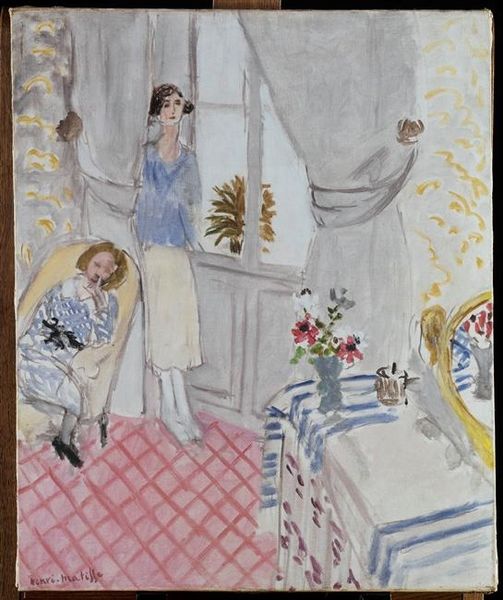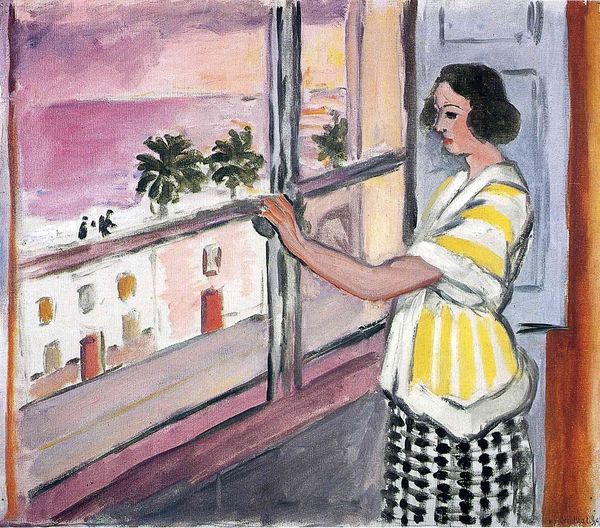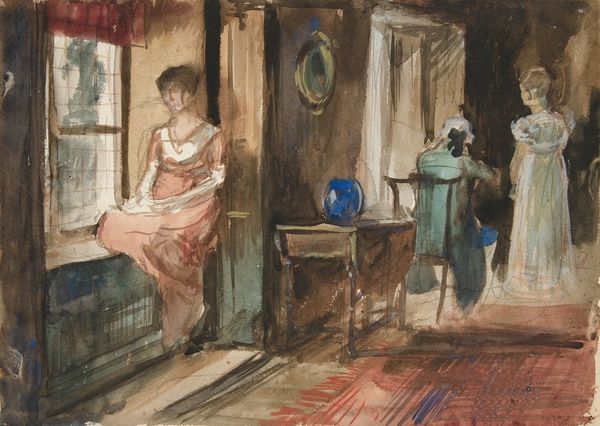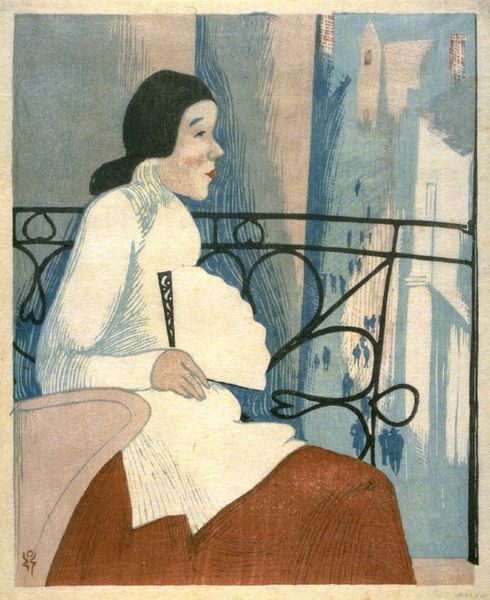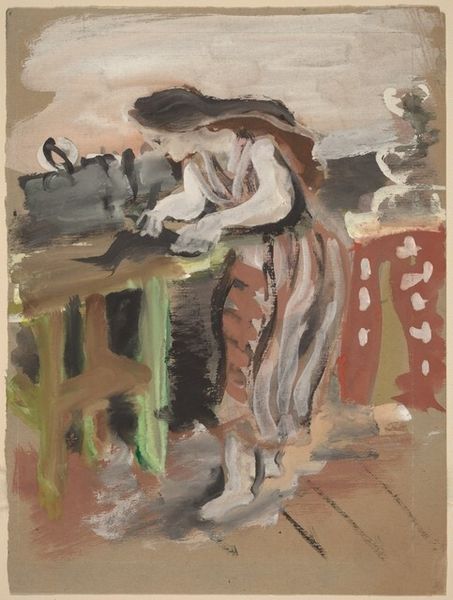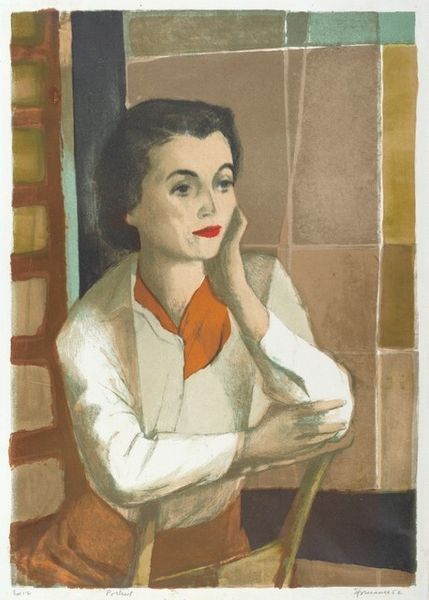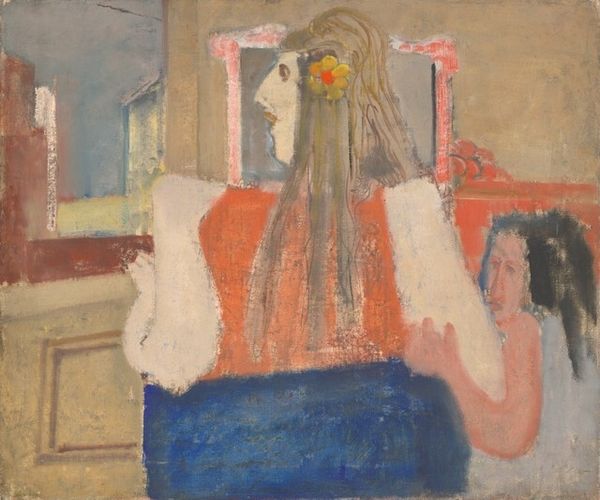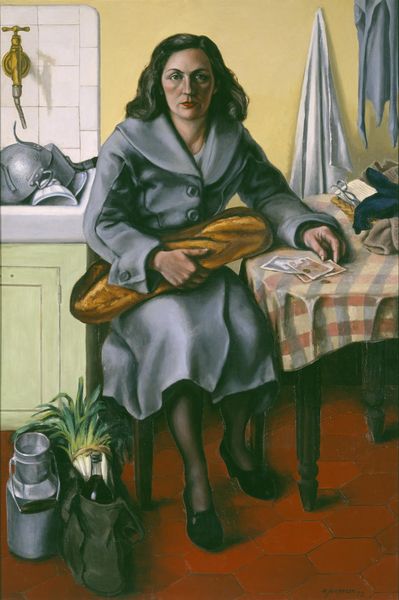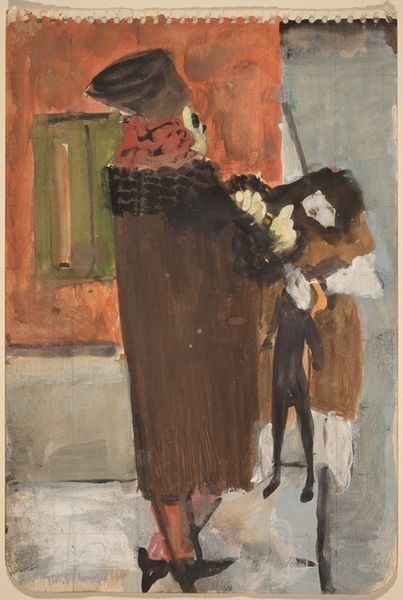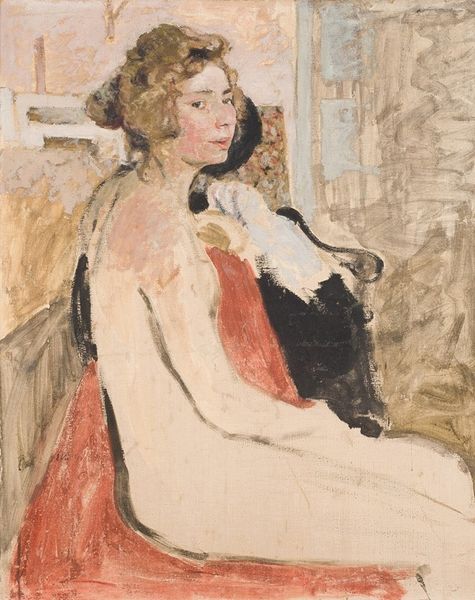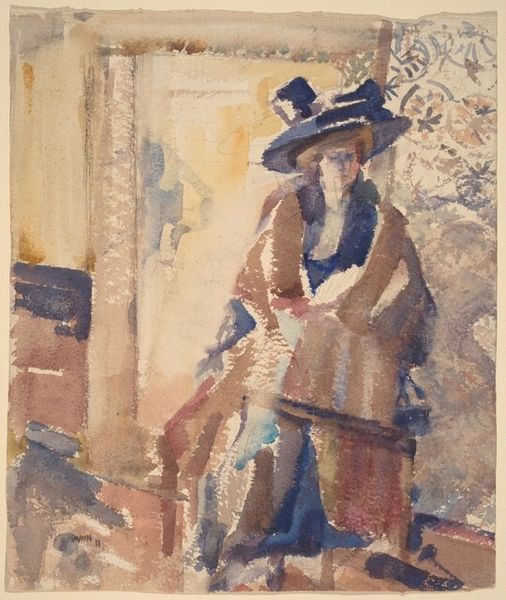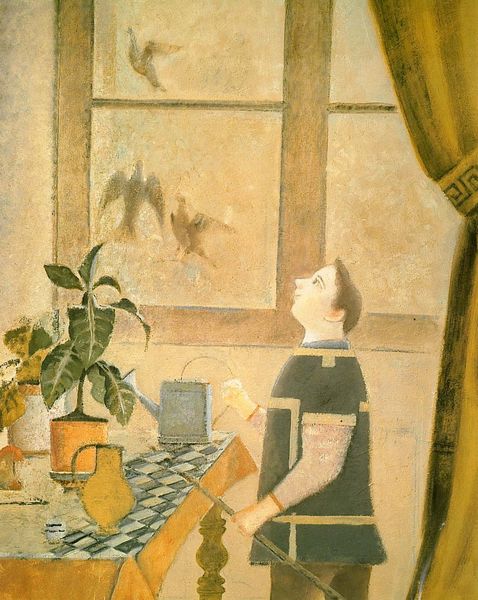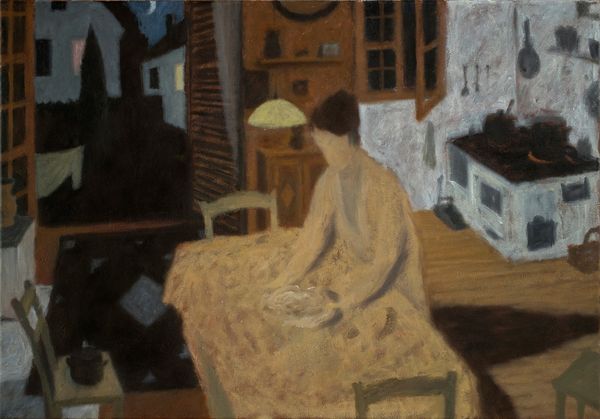
Copyright: Public domain US
Curator: Henri Matisse's "Girl by a Window," created around 1921, is quite captivating, don't you think? An oil painting offering us a glimpse into an intimate moment. Editor: My first thought is... yearning. The young woman stands framed by the window, arms crossed, gaze fixed. Is she observing, or longing for something beyond that cityscape? Curator: I think you might be on to something there. Matisse painted this in Nice. We're seeing not just a pretty view, but the social reality of leisure in a resort town recovering after the first world war. The buildings outside, the people on the beach—they all tell a story of rebuilding, tourism, and society re-emerging into daylight. Editor: Yes, and yet, it is like a scene set behind glass. Her world is that room, rendered in soft blues, whites, and that calming green. It feels very interior compared to the vibrant beach scene she overlooks. And that loose brushwork... Is that sadness I detect, painted right into the very materiality of the oil on canvas? Curator: His application of paint is indeed intriguing. He wasn’t trying to capture the external world in sharp focus. Look how the rigid grid of the window opposes the loose seascape outside. We know that he had quite a complex relationship with the avant-garde world. The format provided him some structure for explorations with abstraction, but this intimate piece really speaks to broader society. It acknowledges the constraints placed upon women in the interwar period, specifically relating to notions of bourgeois domesticity. Editor: So, her captivity is both literal, a painted frame, and socio-economic, defined by her time? Art doesn’t exist in a vacuum; thanks for reminding us! It certainly changes the mood for me, almost transforming that 'yearning' into quiet frustration. Curator: Art always gains resonance when put into context. Do you think her expression embodies the changing, dynamic society? I suppose "Girl by a Window" might be less of a window and more of a mirror to societal tensions. Editor: Yes! Well said. When I return to the artwork in the future, that duality—mirror versus window—is definitely something that I'll consider. Thank you for that historical grounding.
Comments
No comments
Be the first to comment and join the conversation on the ultimate creative platform.
